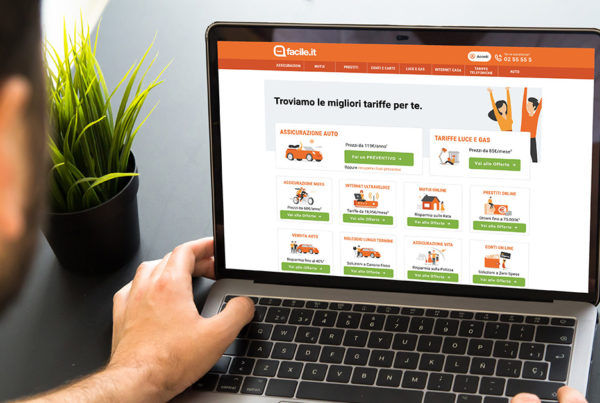“Change favours only those who are prepared for it”, the French chemist Louis Pasteur once said. As profound change, trends fundamentally shape and alter us, our values and our society. Companies, and therefore their brands, face an ever-changing world. This blog discusses the impact of megatrends on the retail, HR and communication sectors and formulates approaches for action.
Thank you for reading this post, don't forget to subscribe!
It is important to understand which issues concern us as a society, entrepreneurs, but also as people. At present, we can observe trends that have been known for a long time and others that are triggered or accelerated by the pandemic. Trends we are talking about are, for example, staycation, neo-ecology, connectivity and new work.
A wide range of organisations are dealing with trends. The German Zukunftsinstitut has developed an interesting and helpful overview: the so-called Trend Map. It shows the individual megatrends as an underground line and their subtrends as stations. It also shows parallels and overlaps between different megatrends and their subtrends. Knowing megatrends and their subtrends, classifying them correctly and evaluating them individually is essential in order to adapt to them in management and business practice or, even better, to use them to one’s own advantage.
Trend or mere fad
Megatrends are formative changes, both now and in the future. They are deep currents of change. We observe them globally and recognise them by their long-term nature and the far-reaching changes in all areas of society. Their complexity and multi-layered nature means that the trends influence each other and develop their own dynamics, which means that counter-poles can always arise.
What moves the trade
Security, health and connectivity are probably the most important trends in retail, accentuated by the pandemic. In their wake, digitalisation and technologisation are being driven forward. All other megatrends such as globalisation, neo-ecology and individualisation are currently subordinate to this mix, but are nevertheless drivers of change and are shaping the industry significantly and in the long term.
Digitisation and technologisation as drivers
For many people, basic needs, security and health now count above all. Offline shopping is seen as a risk. However, the seemingly subordinate trends of digitalisation and technologisation also clearly prove their importance in the figures.
Amazon increased its turnover in the third quarter of 2020 by 37 percent compared to the same quarter of the previous year. Zalando reported an increase of over 20 percent at the end of the third quarter compared to the previous quarter. In the past twelve months, each customer ordered and paid for goods at Zalando an average of 4.8 times. Online shopping became even more popular during the pandemic. To reach customers at all, technology and automation are needed. Subtrends such as Big Data and knowledge and data management pose major challenges for companies to overcome.
Localisation is gaining power
Globalisation is also changing. Consumers are increasingly sceptical about goods of unknown origin. They miss transparency and want to know where something comes from, how and where it was produced. This tendency is reinforced by the trend towards online shopping and the increasingly powerful wholesalers. As a result, supply chains are under scrutiny and customers are buying locally more often. The demand for transparency is reflected in the trend towards neo-ecology. Online second-hand dealers and swap meets are enjoying enormous popularity. According to the Resale Report 2020, the trade volume is expected to more than double from 28 billion dollars in 2019 to 64 billion by 2024.
Take a clear position
As a company and brand, it is advisable to position oneself clearly in this trend environment, to place oneself within the trend map and to formulate one’s position unambiguously. It is imperative that products are available online so as not to lose customers to large e-shops. Swiss e-commerce has an enormous power that should be used. Solutions should be worked out on how to distribute one’s products and services online. Does it make sense to offer your products through a third-party shop? Or is it more effective to set up your own shop? These questions should be carefully examined within the company and answered with a clear concept.
Declarations of origin and production, proof of carbon footprint and transparent information on ingredients also make it easier for consumers to classify the products and increase their credibility. Lending models or exchange possibilities meet the sustainability concerns of a large target group and promote sustainable consumption (sharing economy). An analysis of the target group according to style groups, i.e. according to attitudes, values and life situations, instead of demographic characteristics, is the first important step. Only when we know our target group can we define measures such as those above.
The employees of the future
Human resource management is undergoing an extremely fast and strong change.
Fuelled by massive cutbacks related to the Corona pandemic and the push of generations Y and Z into the labour market, it is becoming imperative for companies to address these changes. Only then can young talent continue to be acquired and turnover kept low. Important megatrends for this trend field are connectivity, new work, knowledge culture and the gender shift.
More and more companies are creating a “we” culture and focusing on cooperation instead of competition. This is accompanied by a reduction in hierarchy, which also leads to a change in corporate culture. The term “New Work” means much more than just the expansion of the home office. It is generally about flexibilisation and digitalisation in all areas, combined with an appeal to personal responsibility and team organisation.
Through rapid change and automation of simple work steps, knowledge becomes the strongest currency. Stereotypical jobs, i.e. jobs that are strongly characterised by routine, are being dissolved and are changing.
Working time is living time
For the new generation of workers, connectivity is essential. In a German study (Randstad Arbeitsbarometer), 60 per cent of respondents said they were reachable outside working hours. This trend has been consistent for years. Switching seamlessly between café and couch in the home office has become a matter of course for many. Digital cooperation is fuelling organisation in teams across borders and making business trips superfluous. This has seen a huge upsurge, especially during Corona. Zoom alone had over 13 million downloads in the app store by October 2020. The year before, it was around 900,000.
Generation Z gains influence
The first generation, which grew up with smartphones and has a completely new attitude to life and work, is optimistic about the future. They are relaxed about careers, find job changes enriching and strive more for intangible goods than any previous generation.
Values and hierarchies in motion
Shared and lived values strengthen the team. Companies are well advised to think about an overarching purpose. However, it is crucial for success that this overarching purpose is credible as well as comprehensible and tangible in the company’s behaviour on a daily basis. At the same time, the company’s purpose leads to more satisfied and loyal employees who value their job.
Hierarchies should also be questioned. For agile organisations, as they are demanded everywhere today, hierarchies are an obstacle. Employees who identify with the purpose of the company do not need to be led by a superior. Furthermore, silo organisation should be replaced by team organisation, which is supported by trust and transparency. Information is shared at all levels so that employees can act in the interest of the company.
Planning for the future is not possible due to the speed of change and unpredictable events like Corona. Therefore, it is important to be open to new ways of doing things, to test them and to fail at them if necessary. Companies of the future develop a culture in which mistakes are not only allowed, but are perceived as an opportunity.
Brands become drivers of change
The communications industry is preoccupied with the economy of meaning, sustainability, omnichanneling, individualisation and social networks. People will consume less in the future, but more consciously. Consumers expect companies to communicate and participate transparently and honestly. The study by the Capgemini Research Institute “Consumer Goods and Retail” confirms this development. Important: the proclamation of a purpose is not enough. Only credible and proven commitment reaches customers. Transparent communication of origin and production conditions is increasingly demanded. What the customer buys must keep the promise that was communicated. Anything else is a breach of trust (deloitte insights). Or as the Zukunftsinstitut calls it: every touchpoint becomes a trustpoint.
The buying process has also changed significantly. Google proves in a study that customers in business-to-business transactions have made twelve different information requests on the internet before they contact the supplier directly. This means that customers are well informed about an offer, which fundamentally changes the starting position in the sales conversation. The product itself hardly needs to be explained any more. The interaction from person to person serves almost exclusively to check the sympathy between the prospective customer and the provider and to provide security.
Connecting benefits and data
These developments show that a company and its brand should create a benefit and actively think ahead. In order to reach customers who see several thousand advertisements every day, it is essential to make the defined purpose recognisable in various forms. This strengthens the brand, but does not limit us to specific products or services.
To enable omni-channelling and transparent end-to-end communication, data collection and artificial intelligence helps. Clustering by style groups and life situations rather than demographics is greatly simplified by artificial intelligence. If consumers are understood, their interests are known. This allows them to be served with more meaningful information.
If a company manages this in real time, it reaches its style group at the time when they are highly sensitive to the offer. Once the brand has defined its purpose, it should learn to gather and interpret customer knowledge. This allows communication to be targeted and individualised according to style groups.
Purpose creates scope for development
Defining one’s own purpose is thus the first important step towards remaining agile and independent in the future. The clear stance allows customers and employees to orientate themselves and the company makes itself independent of products or services. More about the purpose and the benefits for all stakeholders can be found at Yellow.



